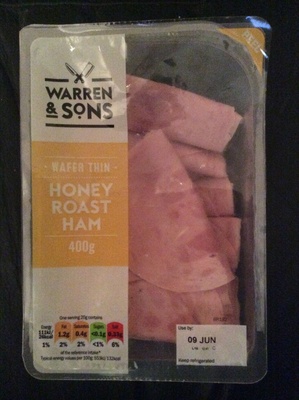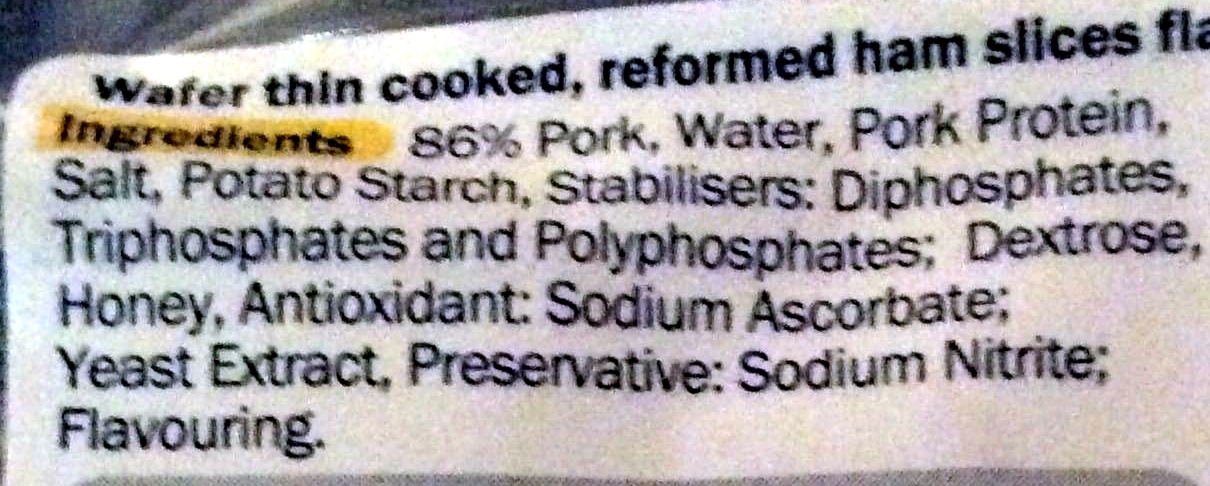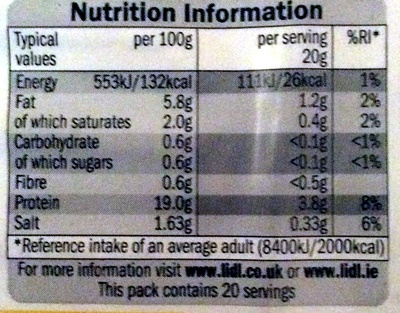Honey Roast Ham - Hazelmeade farm - 400g
Ambiguous barcode: This product has a Restricted Circulation Number barcode for products within a company. This means that different producers and stores can use the same barcode for different products.
×
This product page is not complete. You can help to complete it by editing it and adding more data from the photos we have, or by taking more photos using the app for Android or iPhone/iPad. Thank you!
×
Barcode: 20329778
Quantity: 400g
Packaging: Pastic
Brands: Hazelmeade farm, WARREN & sons
Categories: Meats and their products, Meats, Prepared meats, Hams
Origin of ingredients: United Kingdom
Manufacturing or processing places: Ireland
Traceability code: UK CQ513 EC, IE 501 EC
Stores: Lidl
Countries where sold: United Kingdom
Matching with your preferences
Environment
Packaging
Transportation
Report a problem
Data sources
Product added on by bcatelin
Last edit of product page on by inf.
Product page also edited by kiliweb, tacinte, tacite-mass-editor, yuka.ZmJnR1Ria3p1UHdQd2ZNeThDcUkxZUpLeHBxWlJINmxPY1VLSVE9PQ.
If the data is incomplete or incorrect, you can complete or correct it by editing this page.










